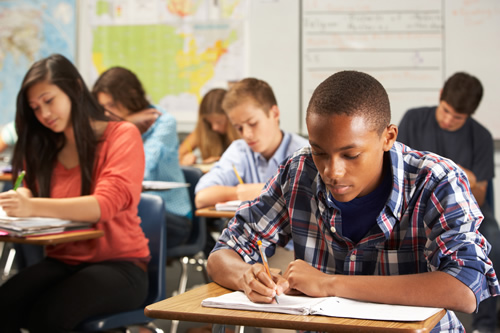In today's interconnected globe, student neighborhoods play an essential function in shaping scholastic and individual experiences.

These communities are not just collections of individuals but are vibrant communities that foster development, finding out, and partnership among students. They differ extensively in type and function, from campus-based groups to worldwide on the internet forums, each offering one-of-a-kind chances for engagement and development.
Whether you are stepping onto an university school for the first time or taking part in virtual understanding atmospheres, recognizing the structure and advantages of pupil areas can substantially enhance your academic trip. This short article looks into the significance of student areas, checking out how they function, the benefits they offer, and the methods which they can be leveraged for personal and academic success.
Comprehending Trainee Communities
Student areas are fundamental to the scholastic experience, working as both social and instructional support group. At their core, these neighborhoods are groups formed naturally by pupils that share common rate of interests, goals, or fields. They can be casual, such as study hall, or official, like trainee unions and clubs.
These communities are defined by a common identification and the collective pursuit of expertise, skills, and experiences. They function as systems for pupils to link, work together, and add to each various other's growth, expanding past scholastic boundaries to influence individual advancement and neighborhood engagement.

In essence, student communities are microcosms of larger societal frameworks, HURRY AND WILL GIVE BRAINILIST! Find three major differences between Pan in the Greek myth and Pan in "A Musical Instrument." by Elizabeth Barrett Browning. where management abilities are sharpened, ideas are exchanged, and lifelong friendships are developed. The interactions within these communities reflect a diverse blend of social, intellectual, and social characteristics.
- Networking Opportunities: Trainee neighborhoods provide a network of peers and advisors that can supply assistance and assistance.
- Skill Growth: Engaging in neighborhood tasks aids trainees develop crucial skills such as interaction, management, and synergy.
- Source Gain access to: These areas commonly supply accessibility to scholastic resources, consisting of study materials and skilled recommendations.
- Social Involvement: They provide a system for social communication, alleviating the transition into new academic atmospheres and helping to battle seclusion.
Via these different features, student communities become integral to the holistic advancement of students, laying a foundation for future professional and personal success.
The Benefits of Participating In Student Areas
The benefits of joining pupil areas are multifaceted, impacting both academic and personal rounds.

On an academic level, these neighborhoods urge collective understanding, permitting students to take advantage of diverse point of views and expertise. Sharing knowledge and sources within a neighborhood can result in more efficient discovering results and improved scholastic performance.
Furthermore, trainee communities offer a system for individual growth and self-discovery. By engaging with peers from various backgrounds and disciplines, pupils obtain a broader worldview, improving their social competence and empathy. This direct exposure to diverse point of views is vital in creating essential thinking and analytical abilities.
In addition, energetic engagement in community tasks can increase students' self-confidence and self-esteem. Taking on management duties or joining discussions and occasions promotes a feeling of success and belonging, which is vital for general well-being and inspiration.
Kinds Of Trainee Communities
Student areas been available in numerous kinds, each dealing with various interests and objectives. These can be extensively classified right into academic, cultural, leisure, and specialist communities, among others. Each kind provides distinct platforms and opportunities for pupil involvement.
- Academic Communities: These are generally focused around certain fields or scholastic interests. Examples include study groups, honors cultures, and department clubs.
- Social Communities: These teams concentrate on promoting social awareness and variety, frequently arranging events and tasks to celebrate numerous traditions.
- Entertainment Areas: These include sporting activities teams, entertainment clubs, and hobby-based teams that give a break from scholastic roughness and promote physical and mental health.
- Expert Communities: These are targeted at career advancement, offering networking opportunities, workshops, and mentorship programs to prepare pupils for the expert globe.
By recognizing and involving with the right communities, trainees can tailor their university experiences to line up with their rate of interests and job goals, paving the way for a satisfying academic journey.
Developing a Growing Student Community
Creating and maintaining a growing student area needs initiative and collaboration from both students and schools. It starts with cultivating an inclusive environment where all pupils feel invited and valued regardless of their backgrounds.
Establishments can sustain this by supplying resources and centers that motivate communication and participation. This consists of producing physical rooms like student unions and online platforms that assist in interaction and cooperation. Additionally, arranging events, workshops, and workshops can additionally enhance interaction, supplying trainees with opportunities to connect and pick up from each various other.
Management and Trainee Involvement
Efficient leadership is vital in nurturing an effective student neighborhood. Leadership roles within these communities use trainees an opportunity to create and show their business and social skills. Students who assume these functions contribute considerably to setting the tone and instructions of their communities, influencing their peers positively.
Encouraging leadership and energetic participation amongst pupils not just reinforces the community yet additionally empowers people, preparing them for future obstacles. By promoting a society of cooperation and assistance, pupil neighborhoods can prosper, leaving a lasting effect on their members and the scholastic atmosphere in its entirety.


Recent Comments